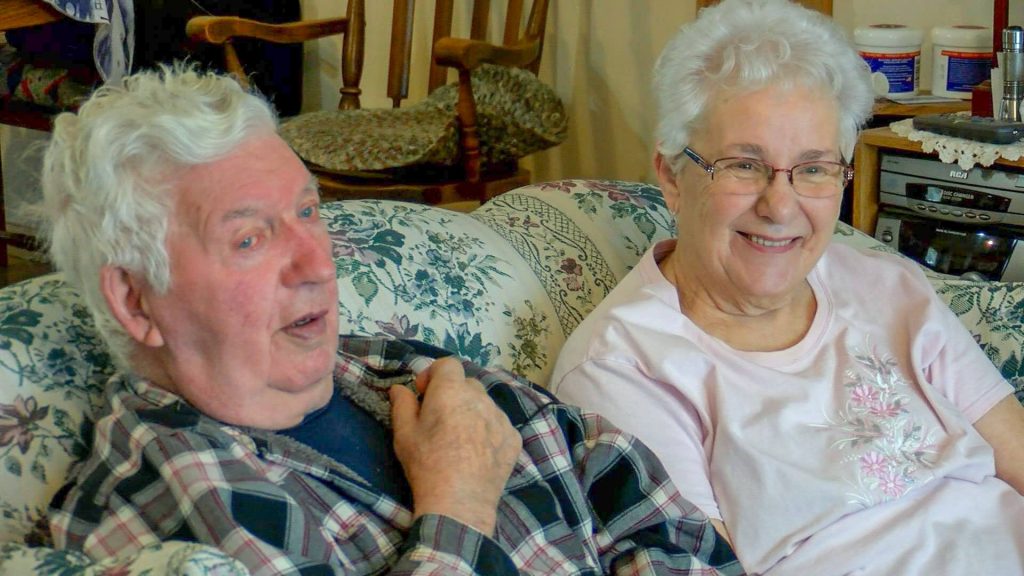
Betty Christopherson says Mayo Clinic Health System physicians have given her the best Christmas present.
"You gave me a new husband," says Betty.
Llewellyn (Lewey) Christopherson wasn’t exactly rebuilt. But he was given a new chance to live a healthy life after being diagnosed with a heart arrhythmia in an unusual spot.
Lewey’s issues started coming to the forefront in January 2022.
"I wasn’t able to work around the farm," says the 85-year-old farmer from rural Melrose. "I went from the recliner to the davenport to the bed. That was my day. I had terrible color. I had to hang on to gates and rails to walk."
What’s worse, Lewey says he was taking several medications and becoming suicidal.
"I wasn’t a very good husband and was crabby all the time," Lewey offers.
That’s when he and his wife decided it was time to go see his cardiologist at Mayo Clinic Health System. He scheduled an appointment to see his regular cardiologist, Michael Meyers, M.D.. Dr. Meyers called in a rhythm specialist, Xiaoke (Ken) Liu, M.D., Ph.D., for his expertise.
After wearing a monitor for a week, it was found that Lewey had an arrhythmia in an unusual spot.
A heart arrhythmia is an irregular heartbeat. Heart rhythm problems (arrhythmias) occur when the electrical signals that coordinate heartbeats don't work properly. The faulty signaling causes the heart to beat too fast (tachycardia), too slow (bradycardia) or irregularly.
According to Dr. Liu, heart arrhythmias may feel like a fluttering or racing heart, and may be harmless. However, some heart arrhythmias may cause bothersome — sometimes even life-threatening — signs and symptoms.
"Lewey had an abnormal spot firing erratically and very frequently from the bottom part of the heart called the left ventricle, near a heart valve," says Dr. Liu. "This caused the irregular rhythm and compromised the pumping efficiency of the heart. If left untreated, this may weaken the heart muscle and cause symptoms and signs of heart failure."
In late September, Dr. Liu proceeded to do an ablation procedure. He was able to do this without X-ray and no radiation. His advanced age brought some concern, but Lewey handled the procedure well.
"Radiation exposure has been well known to be harmful to the human body, and we have been able to eliminate radiation exposure for ablation procedures in recent years," Dr. Liu explains. "In Lewey’s case, we used a special wire connected to a sophisticated mapping system together with an ultrasound machine to locate the exact spot where the abnormal rhythm comes from."
"Once we pinpoint the target, we were able to use radiofrequency energy to cauterize that abnormal spot and make it unable to generate abnormal electric signals," says Dr. Liu.
"I was on the table for just about two hours," explains Lewey. "I thanked Dr. Liu and the staff up and down for what they were doing."
After his surgery, Lewey was monitored for a week, and he has had no issues since.
"I have a lot more energy now," a jubilant Lewey shares. "I’ve gotten rid of most of my depression. The best part is, I’m able to do things with my wife again without being so tired."
"It brings me tremendous happiness and joy to see my patients, like Lewey, feel better or completely recover from frequently debilitating heart rhythm conditions through treatment," says Dr. Liu.
Lewey and his wife of 37 years, Betty, are now able to do things they like to do together. They’re doing crossword puzzles and hitting the dance floor again.
"We enjoy doing the waltz, polka, two-step. The hop waltz is our favorite," says Lewey.







